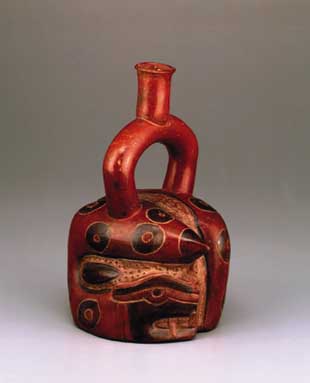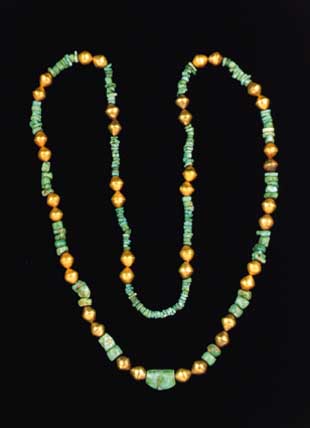|
The Cupisnique culture (1200-200 B.C.) that reigned on the northern coast of Peru is the most ancient in the exhibition. Partly older than the Chavin culture, it has undoubtedly had an independent origin. Later the Cupisnique culture fell into powerful Chavin influence and was assimilated into it. In the area that belongs to the Cupisnique culture and is demarcated by Virú and Lambayeque river valleys, there were, in ancient times, several ceremonial and population centres fitted out with monumental temple plains plus a great many smaller villages. Within the Cupisnique culture, there was no uniform state - it was more a question of unity brought about by similar beliefs and art. In nutritive economy, fish and shellfish caught from the shore had a central role and they were also taken far to the inland. The inhabitants of the river valleys were devoted to
practising agriculture supported by a system of irrigation.
The Cupisnique ceramics is usually dark (grey or black) and of one colour. It was decorated with both sculptural forms and pictorial motifs made by carving. The most important of the vessel forms is the stirrup spout vessel adopted from Ecuador area.
|
|

A typical Cupinisque object had a so-called stirrup-spout and was decorated with a motif combining features of a feline and a
snake. © Museo Arqueológico Rafael Larco Herrera, Lima, Peru (Cat. 13)

A vast amount of jewelry and ornaments like this necklace have been found in the graves of the Cupinisque culture which would imply that wearing ornaments was of great importance within this culture.
© Museo Arqueológico Rafael Larco Herrera, Lima, Peru (Cat. 22)
|

